Info
Subfamily: Panicoideae
Genus etymology: Hyparrhenia = "male below" [Greek] refering to the male flowers at the base of the raceme
Species etymology: rufa = "reddish" [Latin] refering to the hairs on the florets
Photosynthetic type: C4 (warm season)
Nativity: naturalized - intentional
First recorded in Hawaiʻi: 1931
Map


Inflorescence


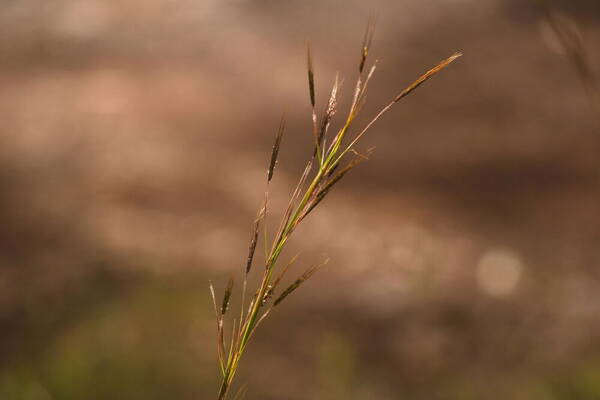

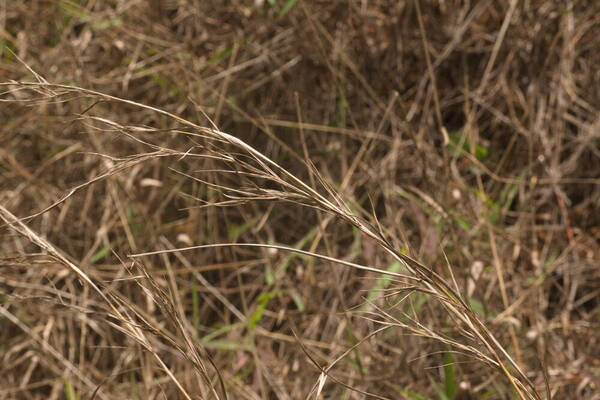
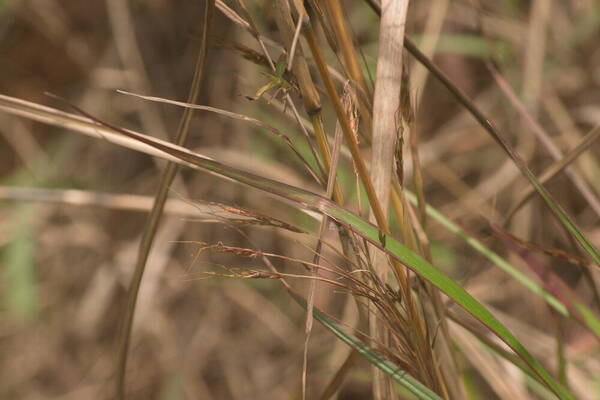
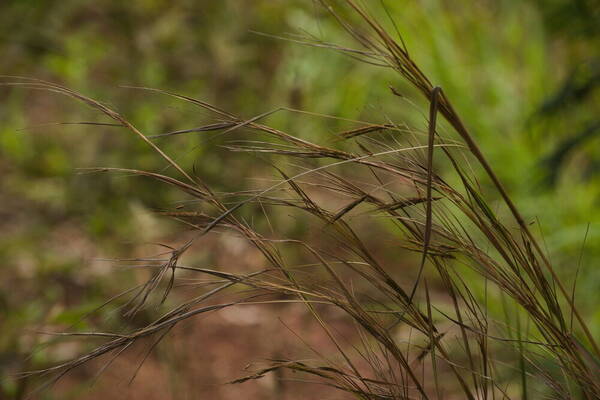

Plant


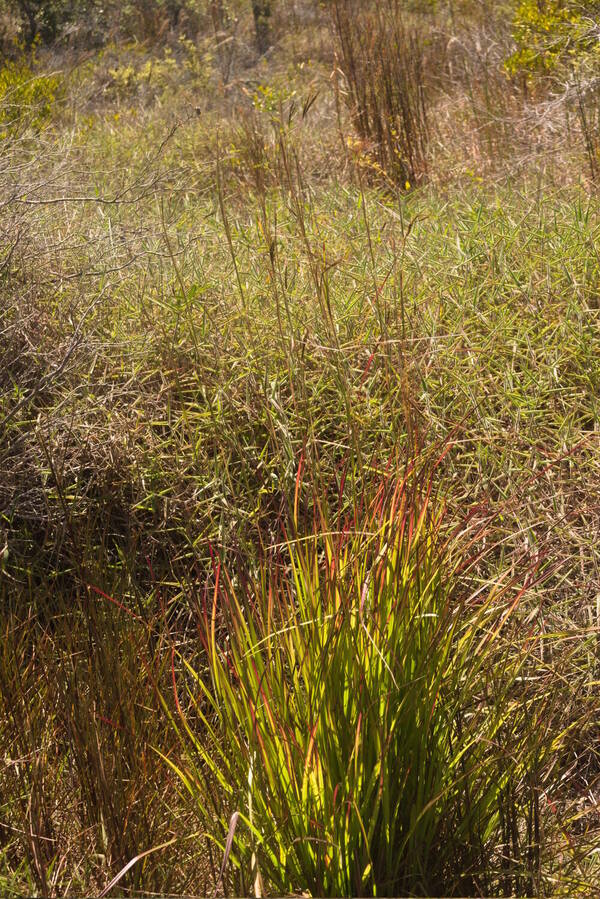

Habit
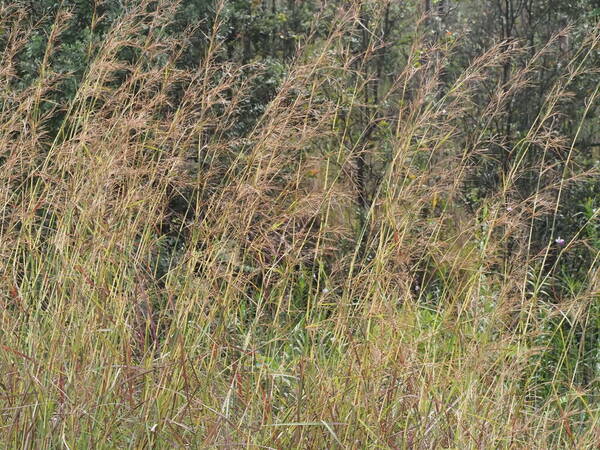


Spikelets






Landscape


Description
Tufted perennial, or sometimes annual; culms 30–250 cm. high. Leaf-blades 30–60 cm. long, 2–8 mm. wide. False panicle lax or contracted and fasciculate, 5–80 cm. long; spatheoles linear-lanceolate, 3–5 cm. long, at length reddish and rolled around the peduncle, the latter usually exserted, often by 2 cm. or more; racemes (1.5–)2–2.5 cm. long, (7–)9–14-awned per pair, fulvous to rufous, not deflexed (or very rarely so); raceme-bases unequal, sometimes ± connate, the upper 2–3.5(–4) mm. long, glabrous (very rarely with a few long hairs), the articulation with the peduncle tip glabrous. Homogamous pairs 1 at the base of the lower, or of both, racemes. Sessile spikelet (3–)3.5–4.5(–5) mm. long, glabrous to pubescent but typically with a scanty covering of stiff rufous hairs, usually glossy; callus 0.2–0.8 mm. long, short and rounded to cuneate and narrowly truncate; awn 2–3 cm. long, rufously pubescent. Pedicelled spikelet acute or rarely mucronate.
(Description source: Clayton, W.D. & Renvoize, S.A. 1982. Flora of Tropical East Africa. Gramineae (Part 3). A.A. Balkema, Rotterdam. 448 pp. )
Caespitose perennial or sometimes annual; culms up to 250 cm high, erect. Leaf sheaths glabrous; leaf laminas 30–60 cm × 2–8 mm, rigid. False panicle 5–80 cm long, lax or contracted and fasciculate; spatheoles 3–5 cm long, linear-lanceolate, at length reddish and rolled about the peduncle; peduncles usually longer than the spatheoles by up to 2 cm or more, rarely shorter, glabrous or pilose above with spreading white hairs; racemes (1.5)2–2.5 cm long, (7)9–14-awned per pair, fulvously to rufously pilose or with the callus and lower part of the internode and pedicel white-hirsute, usually terminally exserted, not or very rarely deflexed; raceme-bases unequal, sometimes ± connate, the superior 2–3.5(4) mm long, terete, glabrous (very rarely with a few long hairs), the articulation with the peduncle tip glabrous. Homogamous spikelets similar to the pedicelled, a single pair at the base of the inferior raceme or both racemes. Sessile spikelets (3)3.5–4.5(5) mm long; callus 0.2–0.8 mm long, short and round to cuneate and narrowly truncate at the apex; inferior glume lanceolate, yellowish-brown to reddish-brown often tinged with violet, rarely green or glaucous, glabrous to pubescent but typically with a scanty covering of stiff rufous hairs, usually glossy; awn 2–3 cm long, the column rufously pubescent. Pedicelled spikelets 3–5 mm long, narrowly lanceolate, acute or rarely mucronate at the apex; callus absent; pedicel-tooth up to 0.3 mm long, triangular.
(Description source: Cope, T.A. (ed.). 2002. Flora Zambesiaca. Volume 10. Part 4. Kew, London. 190 pp. )
Plants usually perennial; cespitose but with short rhizomes. Culms 30-350 cm. Sheaths glabrous; blades 30-60 cm long, 2-8 mm wide. Peduncles 0.7-7 cm; rames 1.5-2.5 cm, 1 almost sessile, the other with a 6-10 mm stalk, both with 7-14 heterogamous spikelet pairs. Glumes of all spikelets moderately densely pubescent, hairs reddish. Sessile spikelets of homogamous pairs 3-5.5 mm, sessile spikelets of heterogamous pairs 3.2-4.2 mm; lemmas awned, awns 2-3 cm. Pedicellate spikelets 3-5 mm. 2n = 30, 36, 40.
(Description source: Barkworth, M.E., Capels, K.M., Long, S. & Piep, M.B. (eds.) 2003. Flora of North America, north of Mexico. Volume 25. Magnoliophyta: Commelinidae (in part): Poaceae, Part 2. Oxford University Press, New York. 783 pp http://floranorthamerica.org/Hyparrhenia_rufa )
Perennials or sometimes annuals; culms densely tufted, forming large clumps 3-25 dm tall, nodes long-pilose. Sheaths sparsely long-pilose, the hairs white, appressed at base, upper sheaths glabrous but with margins ciliate and hairs readily deciduous; ligule a firm, brownish membrane, 1-2.5 mm long; blades flat, glabrous or upper surface hirsute, 30-60 cm long, 2-8 mm wide, narrowed at base. Inflorescences large, paniculate, with numerous branches, the branches lax or contracted, fasciculate, 5-80 cm long, spathes linear-lanceolate, becoming reddish and rolled around the peduncle, 3-5 cm long, sparsely to densely long-pilose, racemes dull yellow, sometimes red-tinged, (1.5-)2-2.5 cm long, with (7-) 9-14 awns per raceme pair, the awns rarely reflexed, with 1 homogamous pair of spikelets at the base of the lowest or of both racemes, raceme-bases unequal, sometimes connate, the upper one 2-3.5(-4) mm long, glabrous, rarely with a few long hairs, the articulation with the peduncle apex glabrous; sessile spikelet (3-)3.5-4.5(-5) mm long, glabrous to pubescent, but usually sparsely covered with stiff red hairs, usually glossy; pedicellate spikelet acute or rarely mucronate, callus 0.2-0.8 mm long, short and rounded to cuneate, narrowly truncate; lemma slender, filiform, ca. 2 mm long, membranous, awn arising from bifid apex, 2-2.5 cm long, golden to copper brown, strongly twisted, geniculate, pubescent; palea lanceolate, ca. 3 mm long. Caryopsis ellipsoid to ovoid, ca. 3 mm long. [2n = 20, 30, 36, 40.]
(Description source: O’Connor, P.J. 1990. Poaceae, pp. 1481–1604. In: Wagner W.L., Herbst D.R. & Sohmer S.H. (eds.)., Manual of the flowering plant of Hawaiʻi. Vol. 2. University of Hawaii Press & Bishop Museum Press, Honolulu )